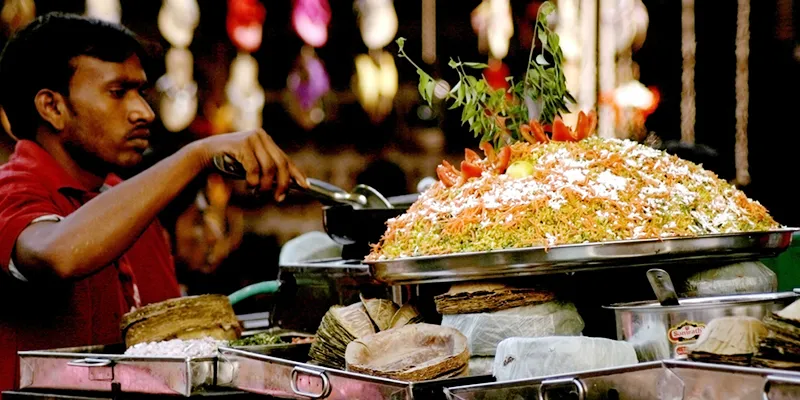Fusion and innovation: what startups can learn from street-food vendors
Fusion of concepts and components from different parts of the world is a powerful form of innovation, especially in today’s connected online world. Whether you are an aspiring entrepreneur or established innovator, fusion opens up new pathways to creativity in products and designs.
In the startup and product development space, combinations of seemingly disparate ideas can sometimes lead to a totally fresh take, perhaps as a new product that has the potential to attract a new set of users, even as it engages the existing users deeply.

Indian culture, with its long history and multiple sub-cultures, offers a lot of opportunities for such fusion. Opportunities also arise from observing other industries in totally different spaces. They can also arise from applying a popular trend to a completely new space to result in a new product.
Just like East-meets-West or old-meets-new in different forms of art, the fusion trend has caught on for street food too. Many creative street-food vendors get experimental and attempt to combine two hitherto disparate ingredients to come up with some delectable fusion dishes. From pizza dosa served by the now-ubiquitous 99 Variety Dosa vendors to Chinese bhel, there’s a lot of mix and match happening here that’s worth taking note of.
An exercise in innovative product/brand building, called Fresh Eyes, could provide interesting platforms to springboard concepts and ideas. It involves urging participants to imagine how professionals from different backgrounds would approach the brand. For example, how would a theatre artiste visualise the product, or how would a teacher interpret the brand. This exercise helps product designers and brand builders take an obtuse look at the product or brand and approach it from a fresh perspective, an activity that can oftentimes unlock penetrating insights leading to pivotal changes in concepts.
With that, we come to our current examples from the street-food space, where vendors from one part of the country have re-imagined a product for it to be likable by consumers from another part, or have taken a popular trend and applied it to a new space. (See also my earlier article: ‘8 entrepreneurship lessons from street food vendors.’)
Pizza/Schezwan dosa: From pizza dosa to Schezwan dosa, that comes with a filling of noodles and spicy Schezwan sauce, the 99 Variety Dosa vendors in Bengaluru and Mumbai seem to be quite at the forefront of fusion. In fact, it’s highly customised too: choose your dosa and pick the vegetables you want to see in it. Then watch the vendor assemble it right before your eyes on a coal-fired tawa.
Pizza parantha: Take a north-Indian stuffed parantha, substitute the original filling with typical pizza vegetables such as onions, capsicum, a special pizza sauce and generous amounts of cheese. It is no wonder that joints that serve this fusion parantha have a long queue.
Chocolate paddu: Paddu is a very traditional snack item in Karnataka and Tamil Nadu. Mini, fried, masala idli would be a close description of what the original dish is. Some creative cooks took the original recipe and twisted it slightly to create chocolate centre-filled paddu served hot off the girdle. Chocolate and anything is usually a good idea and another couple of innovations also centre around this miracle ingredient.
Chinese bhel: Bhel puri, the traditional Mumbai street-food favourite, also comes in this new avatar with an Indo-Chinese sauce, capsicum and spring onions.
Chocolate sandesh: Sandesh is a traditional Bengali sweet made of milk and paneer. What happens if the halwai blends chocolate into the mix? The immensely popular chocolate sandesh is born. Cadbury’s fuelled this trend further by announcing contests for the best chocolate sandesh. That’s a very smart brand, riding an emerging trend to increase penetration and consumption.
Noodle samosa: Samosas stuffed with noodles instead of the spicy potato filling that is common makes for a delicious evening snack. This is common in Goa where some of the bakeries get experimental with their baked goodies.
Chocolate sandwich: Mumbai, Bengaluru or wherever there are sandwich vendors, the chocolate sandwich has made a successful debut. Chocolate shavings are stuffed between two slices of bread, which is then toasted on a grill. A load of sweet chocolate sauce is slathered onto the top of this sandwich before it is served, cut up into convenient, bite-sized parts.
Gobi Manchurian roll: Another favourite street food in the South is gobi Manchurian. Most of us who have tasted it love it. Deep-fried cauliflower coated in a tangy batter is tossed with a Chinese sauce and finely cut vegetables such as onions and capsicum. Usually it would stop here. Some innovative foodies took this Manchurian and rolled it into a roomali roti to make it even better.
In sum, this is a worthwhile exercise: take an existing product and combine it with trends and concepts from a tangential or totally unconnected industry to draw fresh insights and development ideas. By now you get the idea – here’s what street-food vendors are doing; so what can you do?







